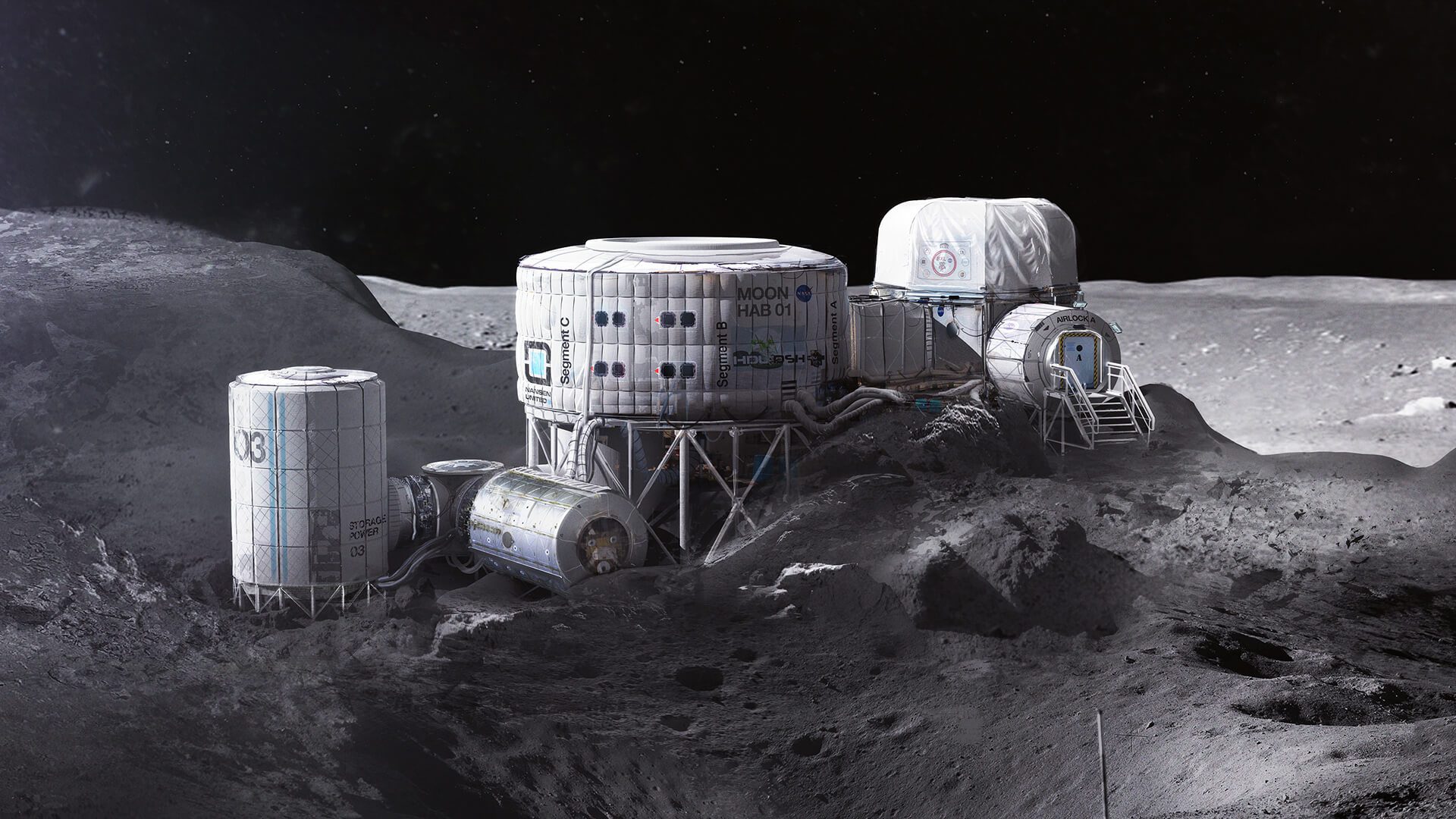
China FREAKS OUT After Shocking Discovery On Moon Leaves Scientists Speechless!
China’s latest Moon mission uncovered something so shocking, even its own scientists were left speechless.
When China’s Chang’e-5 mission drilled into the Moon’s surface and returned with fresh samples, it stunned scientists worldwide. Among the returned materials were tiny glass beads formed by ancient meteorite impacts—beads that surprisingly held water molecules. This discovery defies decades of assumptions about the Moon’s arid environment and could revolutionize lunar exploration and even Earth’s energy future. But what does this hidden water mean, and why is it shaking up the global space race?
The Moon has long been thought of as a dry, barren rock, baked by the Sun’s radiation, with no atmosphere to hold moisture. Yet Chang’e-5’s samples tell a very different story. Scientists found microscopic glass beads embedded with water created through the interaction of solar wind particles with the lunar soil. These beads aren’t rare anomalies; they appear to be widespread across the sampled region. Could the Moon hold vast reservoirs of water beneath its surface, waiting to be tapped?
What Are These Glass Beads and How Did They Form?
These tiny glass spheres formed when meteorites and micrometeorites slammed into the lunar surface at high speeds. The intense heat from the impact melted surface material, which then cooled rapidly to form glass beads. Previously, these were thought to be dry and inert. But the Chang’e-5 samples revealed that many of these beads contain hydroxyl groups and water molecules trapped inside. This suggests the lunar surface is chemically active in ways never imagined.
How did water get inside these beads? Scientists theorize that solar wind protons, essentially high-energy hydrogen ions from the Sun, interact with oxygen-rich minerals in the Moon’s regolith. This reaction forms water that becomes trapped inside the newly formed glass beads during impact events. The solar wind constantly bombards the Moon, so this process could be ongoing, replenishing these water stores over time.
Why Is This Discovery a Game-Changer for Lunar Exploration?
For decades, the absence of accessible water has been one of the biggest challenges to establishing a sustainable human presence on the Moon. Water is essential for drinking, growing food, producing oxygen, and even creating rocket fuel by splitting it into hydrogen and oxygen.
Voyager Caught Something Moving In Space… And It’s Not A Planet
If water is indeed locked in glass beads beneath the lunar surface, future missions could extract this water directly on-site. This could drastically reduce the cost and complexity of lunar colonization, allowing astronauts to live and work for extended periods without relying on costly supply missions from Earth.
China’s discovery also means the Moon could become a refuelling station for deep space missions. Rockets could be refuelled in lunar orbit using hydrogen and oxygen derived from this water, making missions to Mars and beyond more feasible. Does this open a new era where the Moon serves as humanity’s gateway to the stars?
Could This Hidden Water Be More Widespread Than We Thought?
While Chang’e-5 landed in Oceanus Procellarum, one of the Moon’s vast basaltic plains, scientists are now eager to find out if similar water-rich glass beads exist elsewhere. Especially intriguing is the lunar South Pole, which is known to harbour permanently shadowed craters with water ice deposits.
China has announced plans for Chang’e-6, Chang’e-7, and Chang’e-8 missions to explore these regions. If water is abundant there, it would dramatically increase the Moon’s potential as a space resource hub. But what if these hydrated beads are even more widespread than anticipated? Could the Moon be less a dry rock and more a reservoir of hidden water resources?
The Global Space Race Heats Up: Why This Discovery Matters Politically
This breakthrough has sent ripples far beyond the scientific community. As nations race to assert their presence in space, control over lunar water resources could become a strategic advantage unlike any other. The ability to sustain a lunar base independently from Earth would provide tremendous geopolitical leverage.
NASA, ESA, Roscosmos, India, and private companies like SpaceX are all accelerating their lunar programs, mindful that whoever secures access to lunar water could dominate the next frontier of exploration and commerce. What new alliances or conflicts might emerge as countries compete for this precious resource? Are we witnessing the dawn of a new kind of space Cold War?
How Will This Change Our Understanding of the Moon’s Past?
The presence of water in glass beads formed by impacts suggests the Moon’s surface has been chemically evolving over billions of years. The solar wind-driven water formation process implies a dynamic environment rather than a static, lifeless rock.
Could this mean that the Moon once had more abundant water? Or that water cycles continue today on the surface, replenished by the Sun’s energy? And could these processes hint at other, as yet undiscovered phenomena on the Moon?
What Are the Risks of Extracting Lunar Water?
While the prospects are exciting, many experts caution that extracting water from lunar glass beads will be technically challenging. These beads are microscopic and dispersed throughout the regolith. Mining them may require complex and energy-intensive processes.
Moreover, should humanity exploit this resource recklessly, what unforeseen consequences could occur? Will removing water from the lunar surface disrupt natural processes or lead to environmental degradation on the Moon?
The Mystery Deepens: Are We Prepared for What We Might Find Next?
As China’s discovery reshapes our vision of the Moon, a profound question arises: are we prepared for what else might be hidden beneath the lunar surface? Could there be even older reservoirs of water, or signs of ancient activity, waiting to be uncovered?
And on a more speculative note, some scientists wonder if the Moon’s hidden water stores could have implications for understanding the origins of life on Earth.
“Could cometary impacts and solar wind processes on the Moon be connected to water delivery across the early solar system?”
🎥 Watch This:
Explore China’s shocking discovery of water in lunar beads and what it means for the future of space exploration and colonization.
* * *
You’ll Love This One …
Former Space Chief Mysteriously Vanished After Leaking The Truth About The Galactic Federation
The mysterious claims made by former Israeli space security chief Haim Eshed sent shockwaves across the world in December 2020.
As the former head of Israel’s space program, Eshed was a figure of great authority, holding decades of experience in military intelligence and space research.
When he publicly declared the existence of an alleged Galactic Federation—an advanced extraterrestrial alliance actively in contact with Earth governments—it wasn’t just another outlandish claim. It came from a man with access to top-level secrets, a man who had nothing left to gain—and potentially everything to lose.
* * *
READ NEXT: CIA Officer FINALLY Breaks Silence On UFO & Alien Evidence
Trending Now: Planet 9 Exists! New Evidence Confirms Its Presence Beyond Neptune
Stay Connected: Follow us on Telegram for the latest shocking discoveries and exclusive stories!
Got thoughts or tips? Drop a comment below — we love hearing from you!


Do you believe lunar water will be the key to humanity’s future in space—or could it bring unforeseen challenges we haven’t yet imagined?